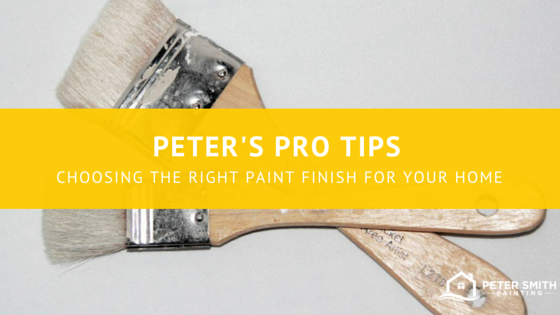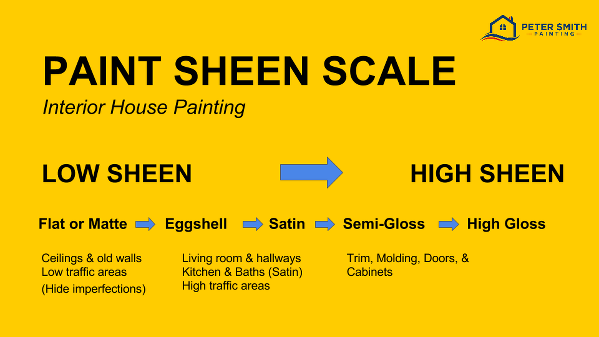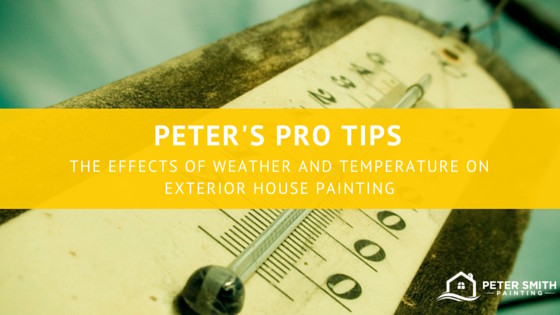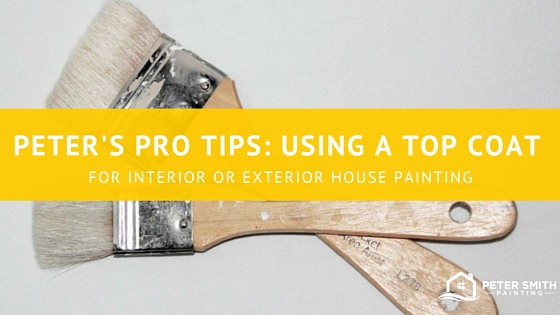
Choosing The Right Paint Finish For Your Home
A paint finish can make a big difference in how a paint color looks on the surface when you are painting your home.
Paint finishes reflect light differently; so the light in the room should also be part of what determines the finish you use.
It’s important to note that the durability and maintenance of the surface you are painting should enter into your decision on choosing your paint finish.
Which paint finish should you use on interior walls or ceilings?
For interior walls or ceilings, a flat or matte finish is best. It will not highlight any imperfections on the surface that you are painting. Using a high quality paint will clean up well for minor marks or stains.
Using an eggshell or satin finish paint in a bathroom
In bathrooms and high traffic areas a higher sheen paint like eggshell or satin might be necessary. The finish is more durable and will clean up easier. Once dry, these finishes do not touch up well with added paint.
Using paint finishes for interior trim
On trim such as doors, windows, or cabinets, a semi-gloss or gloss finish are often used. It is durable and can stand up to repeated cleaning.
The higher the sheen (gloss is high sheen, flat is low sheen) the more you may see where patching was done on the surface you are painting, so brush marks and roller marks may become more noticeable.

Choose the right paint finish!
Paint finishes for painting the exterior of your house
On exterior siding a flat finish or low luster (a slight sheen) is best. It will not show imperfections as much and touch up well.
Most stains will be a flat finish.
When you use a flat paint or stain on the outside of your house the dirt will not wash off as easily when in rains; and dirt on the surface of your home is the food for mold and mildew.
Keep in mind that flat finishes on exterior siding may make your house more prone to these conditions.
Should you use a high sheen (semi-gloss or gloss) paint on the exterior trim of your house?
Trim paint with a higher sheen (gloss or semi-gloss) is used mostly used to accent doors, windows or anything on the exterior other than your siding.
Here is a little more information on paint finishes from award-winning home improvement expert and master builder Karl Champley, and our friends at Benjamin Moore:
You can have a lot of fun with different paint finishes. The right finish can truly enhance the color of the surface that you are painting and make your home unique.


